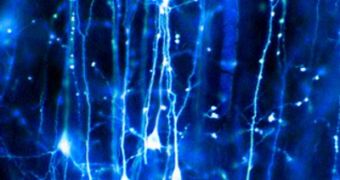We all know that men and primates are the two most distinctive species on the evolutionary scale thus far, simply because our brains are larger and more complex than those of other creatures. Now, researchers place our ability to perform delicate tasks, such as bending our fingers at will and moving our shoulders, to the high developmental level of a new portion of the human brain, which resides next to the one involved in such movements on all other animal species.
Around the world, only men, the Great Apes, and a few species of monkey were able to surpass their innate limitations, meaning that they've learned how to go beyond using just the circuitry in the spinal cord for movement, and moved up to employing cortico-motoneuronal (CM) cells in the control of spinal cord motor neurons. This allowed these species to evolve the ability to directly control precise movement, while all other animals were left with just indirect access to their own abilities.
"What we've shown is that along with evolution of direct control over motor neurons, a new cortical area has evolved that's right next to the old one. We still have much the same spinal machinery the frog has, but the new cortical area with CM cells endows humans with the superior hand skills to manufacture and use tools – an especially human trait," explains University of Pittsburgh School of Medicine department of neurobiology professor Peter Strick, PhD, who is also a senior career scientist at Pittsburgh's Veterans Affairs Medical Center, and the senior author of the new study.
Alongside research associate, co-author Jean-Alban Rathelot, PhD, Strick recently published the results of his research in the online journal Proceedings of the National Academy of Sciences. He details therein his work with the rabies virus on monkeys. He says that the virus made a perfect candidate of the experiments, because of its abilities to travel between networked neural cells.
Following the virus, which the team injected into single muscles in shoulders, elbows and fingers, the scientists were able to identify the new portion of the brain, and conclude that it was the one responsible for our “special” abilities. Strick concludes by saying that watching a small child learn to walk is a perfect example of the process that goes on inside this area, as cells and neurons learn to work together for the first time.

 14 DAY TRIAL //
14 DAY TRIAL //